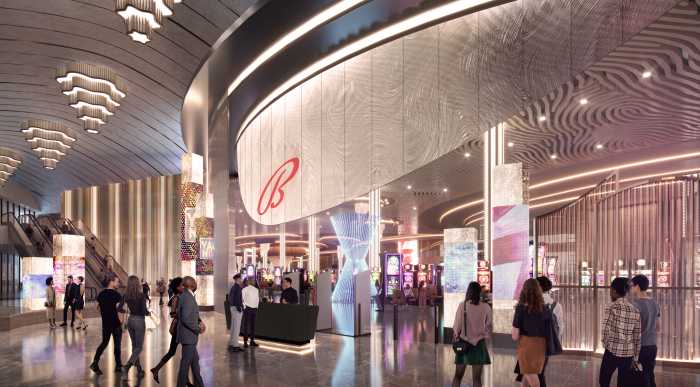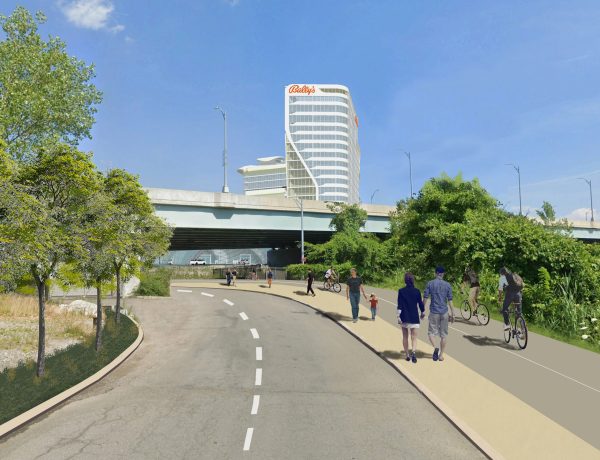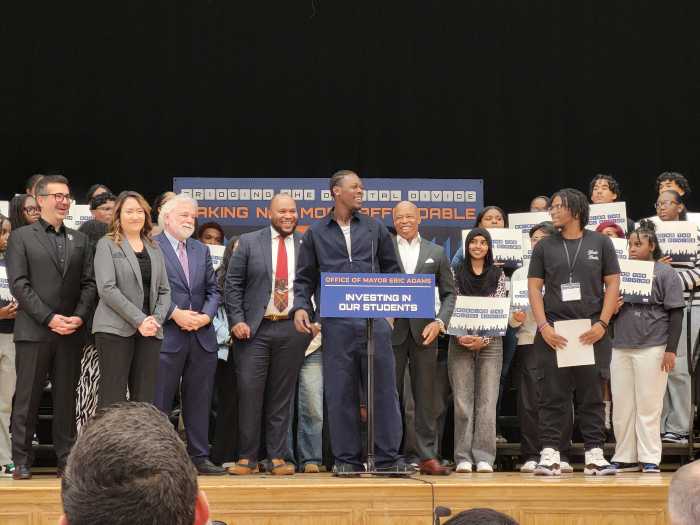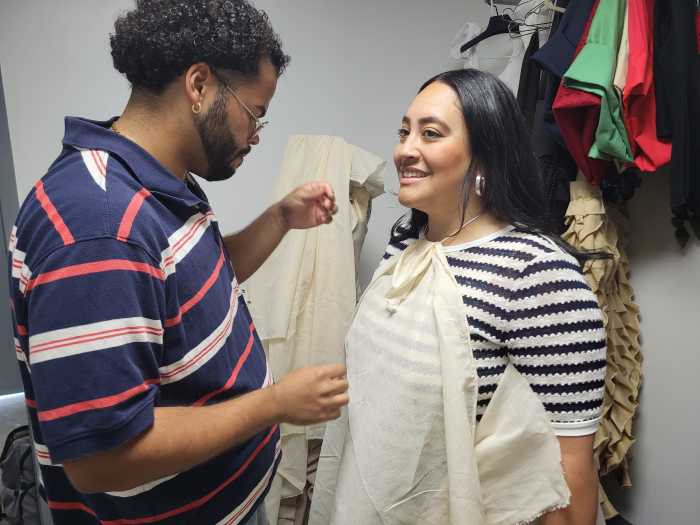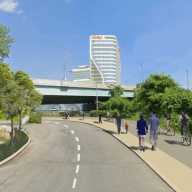Some community organizations in the Bronx are saying “no” to City of Yes for Economic Opportunity, the set of proposals that would be the most major overhaul of the city’s zoning laws since the 1960s.
The plan, which was recently approved by the City Planning Commission, is now headed to City Council — the final step in the approval process. But some worry that the plan will lead to overdevelopment that will run rampant through neighborhoods in the Bronx and now refer to the policy as “City of Cement.”
“Our neighborhoods are jewels, they’re unique — and they’re being disrespected,” said Laura Spalter of Riverdale, co-chair of the Broadway Community Alliance.
If the plan passes, it would allow more types of in-home businesses, remove the 2-year deadline in some neighborhoods to fill vacant storefronts, allow more businesses to be located on upper floors of buildings, and numerous other changes within its 18 proposals.
During the public input phase, where the Department of City Planning (DCP) sought citywide input from borough presidents and the 59 community boards, City of Yes for Economic Development received mixed support from the 12 boards in the Bronx.
In the end, seven of 11 Bronx boards supported the plan with conditions, as did Borough President Vanessa Gibson. The Department of City Planning website also names over 40 business, civic and community organizations throughout the city that support it. CB 1 did not formally submit a vote, and CB 8 voted on a component-by-component basis, said DCP.
But three boards (10, 11 and 12), spanning the east and west Bronx, voted no — and some residents are speaking out before it’s too late.
City of Yes for Economic Opportunity is one of three sweeping initiatives put forth by Mayor Eric Adams via the Department of City Planning. The other two focus on carbon neutrality, which passed the City Council in December, and housing, which is set to be presented to community boards and borough presidents throughout this spring.
In a recent op-ed for amNewYork Metro, Adams applauded the City Planning Commission’s vote of approval, saying “outdated [zoning] rules prevent businesses and entrepreneurs from meeting real needs.”
However, not everyone agrees that change is needed at this time or that it would bring equal benefit to all communities.
Some local advocates told the Bronx Times that the city did not do enough to engage with residents before the vote and that the new rezoning policies are at best unnecessary — and may cause unintended harm to the environment and character of residential neighborhoods.
“If they go through with the changes, in 10 years we won’t recognize our neighborhoods,” Spalter said.
‘Nothing is protected’
Barbara Burn Dolensek, who has lived on City Island for 46 years, told the Bronx Times that some New Yorkers seek out certain communities precisely because of what can’t be built there.
She said she’s well aware of the island’s reputation for NIMBY-ism and exclusivity. But in her view, it’s a welcoming place for all who “want to live in a small town in a big city.” Some people don’t want to live near bodegas or nightlife spots or in large buildings with anonymous neighbors, she said.
The concern of Burn Dolensek and others is that the proposed rezoning could lead to a development free-for-all that the city is pushing through too quickly.
“Why create more commercial spaces if you’re not using the ones you have?” she said.
Karen Argenti of the Protect Bronx Neighborhoods from Overdevelopment Coalition was inspired by City of Yes to bring together groups throughout the Bronx that want to preserve what’s already working about their communities.
The coalition is a subset of the Bronx Council for Environmental Quality, which has been active for 53 years. It is made up of 26 groups (and growing, Argenti said), representing merchants, environmental activists, homeowners and tenants from all over the west and east Bronx.
Under the new rules, “Nothing is protected, and they’re expanding every single thing they can think of,” Argenti told the Bronx Times.
“Everything they put in [the policy] was for new commerce, commercial or industrial enlargement. It’s not helping anyone who’s in existence,” she said.
But the city says otherwise.
“Nothing in City of Yes for Economic Opportunity would allow new development as-of-right,” said a DCP spokesperson in a statement to the Bronx Times. Rather, “it is focused on allowing existing spaces to adapt over time, or creating new zoning tools that would govern future development.”
A statement on the coalition’s website discusses four “myths” of City of Yes. While the document addresses all three City of Yes plans (not just the economic one), it makes the overall point that “[m]ore time is necessary to properly evaluate impacts of recent zoning changes before passing new ones.”
According to Argenti, the current rezoning effort comes too soon after a citywide 2016 rezoning under Mayor Bill de Blasio. The 2016 change, known as Zoning for Quality and Affordability (ZQA), was a housing-specific policy focused on making it easier for developers to build affordable and mixed-use housing, among other goals.
Zoning changes, Argenti said, require years to have a full impact and it is unclear how the 2016 changes will unfold. She noted that with the proposed zoning overhaul, “They haven’t established a need.”
Though there may be confusion with three separate policies under the umbrella name “City of Yes,” the DCP spokesperson told the Bronx Times that some community groups have acted “in bad faith” to conflate the three City of Yes policies, increasing public confusion.
But Argenti believes the policies are interconnected — and could end up working against each other. For example, she said the zoning changes could undo the environmental goals.
The city is about 72 percent impervious to water, she said, making it prone to severe flooding as climate change brings more frequent and heavy rains. She feels that zoning changes will only bring increased ground cover. Argenti said the Bronx is around 60 percent water-impervious — and “we’d like to keep it that way.”
Spalter also expressed concern about the ability of city services and utilities to keep up with increased development. “There’s nothing in City of Yes about infrastructure,” she said.
The city is “not protecting our environment by building, building, building,” said Argenti.
Community outreach
Another issue, according to Argenti, is that the economic policy was developed by businesspeople and financial stakeholders, and she feels most regular people aren’t attending outreach hearings, don’t understand the technicalities and won’t read all 1,158 pages of modified zoning text.
The city has touted extensive outreach efforts for the economic plan, including almost 200 meetings with community groups, 33 of which were in the Bronx, according to a DCP spokesperson.
Argenti and the coalition believe this engagement was counterproductive.
“Nobody asked those people [on community boards] what they thought is gonna happen in their neighborhood,” Argenti said. “[DCP is] technical, so they tried to make it sound better, but in doing so, they actually obfuscated what their real goal was.”
Burn Dolensek agreed. “They’re really trying to slither this through.”
She said she heard presentations by DCP but felt the agency was “leaving out all the details” and “glossing over” information.
With City of Yes for Economic Development comprising 18 separate proposals — and community boards soon to be presented with the plans for housing — keeping up with it all is not easy. Some say that’s a tactic on the city’s part.
“I think it’s part of the strategy, just overwhelm everyone,” Spalter said.
‘Unintended consequences’
Spalter has lived in Riverdale for over 50 years and co-founded the coalition with Argenti. She told the Bronx Times that her parents used to own a small business and that her organization does support entrepreneurship.
However, she said, City of Yes “erases the lines between commercial and residential neighborhoods” creating “a total blending of uses” that might not be compatible.
She said that high-density neighborhoods don’t want more density — and low-density areas want to stay that way.
As the City Council prepares to vote, these local groups hope at least some of the 18 rezoning proposals may be removed based on input from constituents.
Burn Dolensek of City Island said that while she has not personally spoken to her City Council member, Kristy Marmorato, she believes based on what Marmorato campaigned on that she will oppose City of Yes.
“We’re assuming that Marmorato is on our side,” she said.
Marmorato, a Republican representing District 13, made history in the Bronx by defeating incumbent Democrat Marjorie Velázquez in November. Velázquez’s vote against — then later in favor of — a Throggs Neck upzoning project was what many believe cost her reelection. Marmorato has said she would not have approved the project.
The council member could not be reached in time for publication.
But if the City of Yes policy stands, Spalter said it’s a “one-size-fits-all” policy that could negatively impact New Yorkers from all walks of life.
For renters, homeowners and entrepreneurs alike, she said, “There will be unintended consequences.”
Reach Emily Swanson at eswanson@schnepsmedia.com or (646) 717-0015. For more coverage, follow us on Twitter, Facebook and Instagram @bronxtimes


